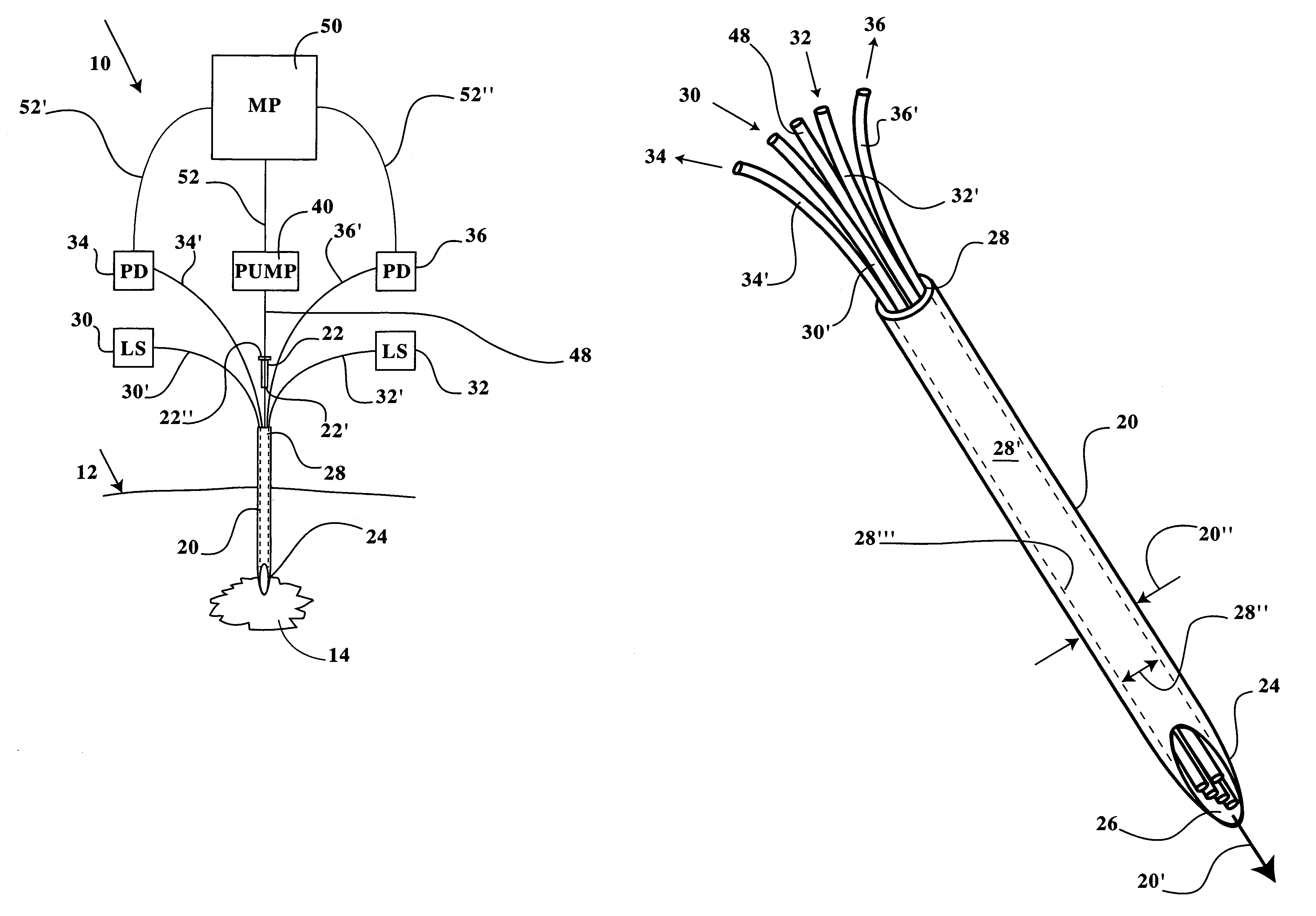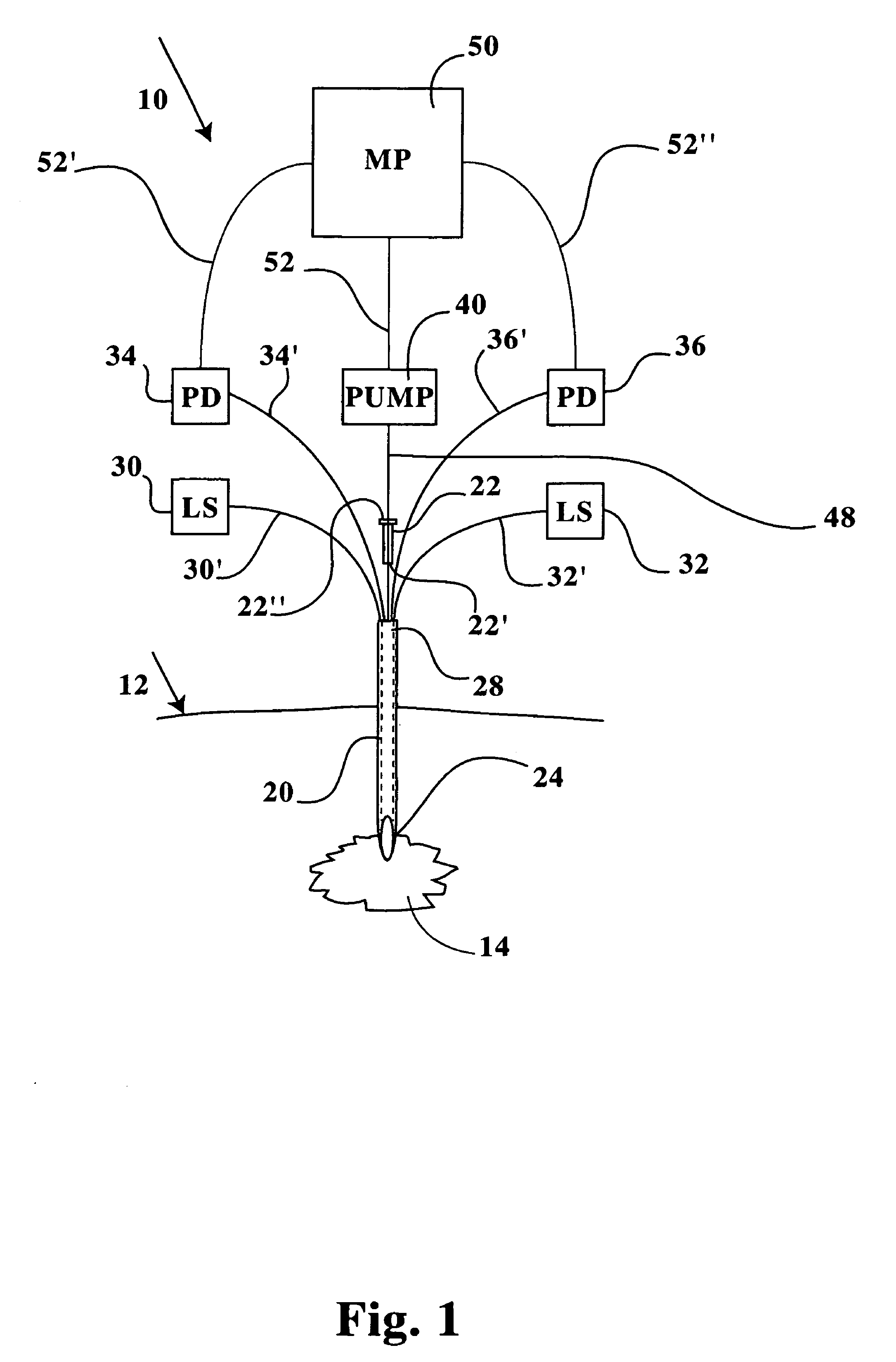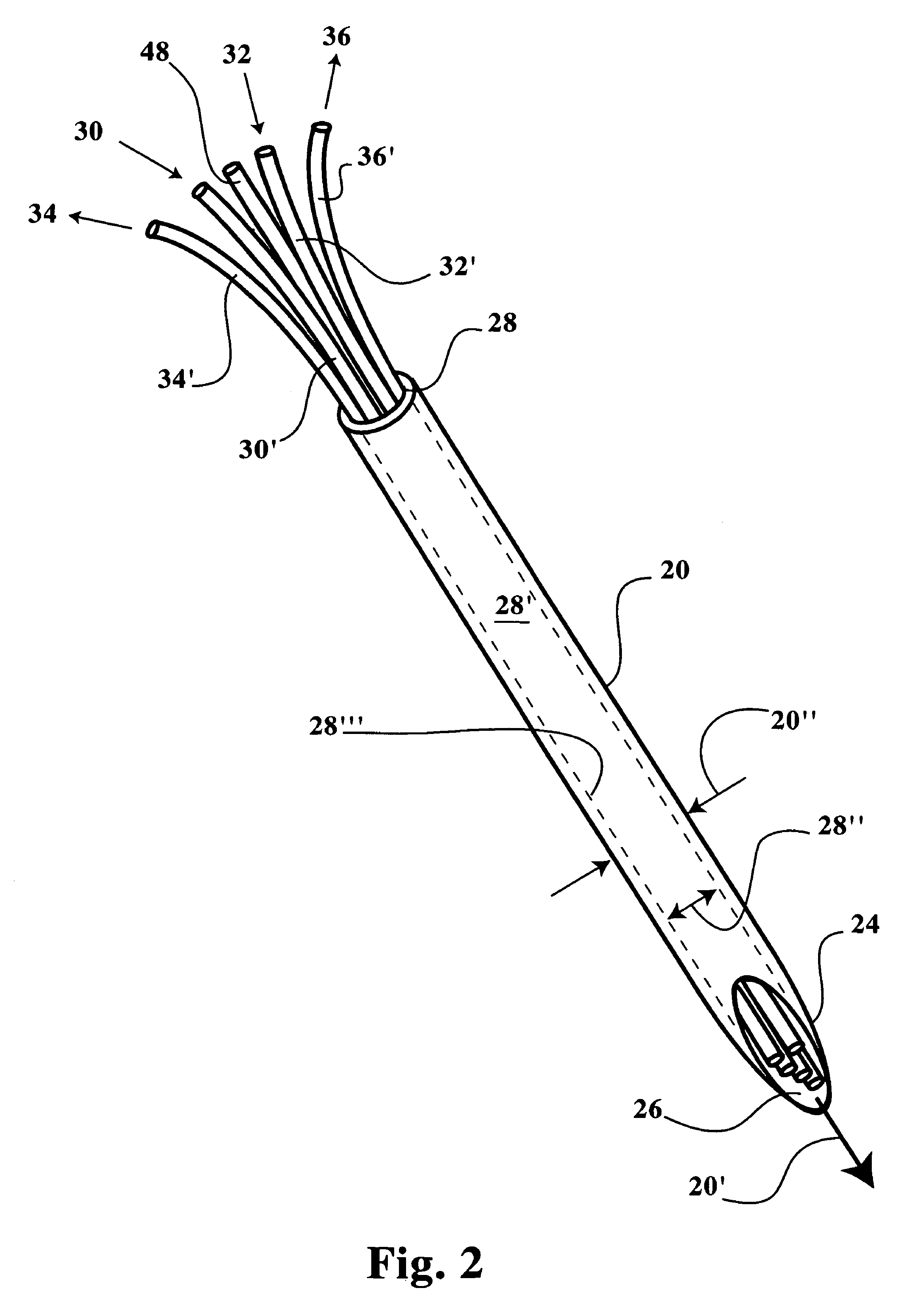Precision sensing and treatment delivery device for promoting healing in living tissue
a technology of living tissue and delivery device, which is applied in the field of micro-needles, can solve the problems of inefficiency of systemic distribution of medication within the patient by the arteries and veins, lack of precise volume delivery of one or more therapeutic fluids to tumors or numerous groups of diseased cells, and lack of needles, etc., to facilitate the healing of diseased and/or damaged cell tissue, facilitate cellular healing or poisoning of malignant cells, and facilitate the effect of healing
- Summary
- Abstract
- Description
- Claims
- Application Information
AI Technical Summary
Benefits of technology
Problems solved by technology
Method used
Image
Examples
Embodiment Construction
[0027]Referring now to FIGS. 1-8B, a multiple channel needle and delivery system 10 is disclosed, including a microneedle 20 sized for insertion into cell tissue within a patient without significantly disrupting a patient's dermal surface 12 or underlying tissue layers proximal of a target cell tissue 14 or a target tumor mass 16. The microneedle 20 includes a distal insertion end 24 having an elongated and tapered end opening 26 (see FIGS. 2, 3A and 3B), thereby readily allowing positioning of the insertion end 24 and end opening 26 within the target cell tissue 14, a tumor mass 16, or an internal organ or joint (see FIGS. 6-8B). The microneedle 20 includes a proximal end, identified herein as a manipulative end 28, which is maintained exterior of the target cell tissue 14 during positioning of the insertion end 24. The manipulative end 28 is sized in internal diameter (ID) to receive therein one or more microtubes 48, 48′, and / or one or more microfibers 30′, 32′, 34′, 36′. The man...
PUM
 Login to View More
Login to View More Abstract
Description
Claims
Application Information
 Login to View More
Login to View More - R&D
- Intellectual Property
- Life Sciences
- Materials
- Tech Scout
- Unparalleled Data Quality
- Higher Quality Content
- 60% Fewer Hallucinations
Browse by: Latest US Patents, China's latest patents, Technical Efficacy Thesaurus, Application Domain, Technology Topic, Popular Technical Reports.
© 2025 PatSnap. All rights reserved.Legal|Privacy policy|Modern Slavery Act Transparency Statement|Sitemap|About US| Contact US: help@patsnap.com



